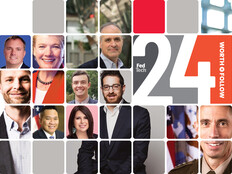How CFPB Recruits Government Innovators
Ashwin Vasan is one of many CIOs competing for digital innovators.
As CIO at the Consumer Financial Protection Bureau, he’s in the market for skilled software developers, graphic and user experience designers, data specialists and cybersecurity professionals who can help further his agency’s mission.
But his ideal candidates have more to offer.
They’re also “curious, bring diverse backgrounds and perspectives, can communicate well with [nontechnical] people, and are passionate about solving problems,” he wrote in recent blog post. “We are looking for highly skilled, creative individuals that love learning new things and are eager to serve the American public.”
CFPB is recruiting innovators by offering a two-year stint that allows them to build interactive tools for financial consumers and improve products that help educate the public about mortgages, credit cards, and other financial products and service.
What CFPB Can Offer Innovators
Technology and Innovation fellows can work from anywhere in the United States after immersing themselves at agency headquarters for a few weeks to get acquainted with CFPB’s mission.
The agency offers awards, opportunities for advancement, paid holidays, the ability to accrue vacation time and sick leave, and access to health insurance plans that may be continued after retirement. Salaries for the fellowship positions cross into the six-figure range.
Annual pay for data scientists ranges from about $86,000 to $175,000, and the length of their fellowships can be extended, according to the job posting. That’s not bad for a fellowship that will likely lead to other opportunities and has already shown tangible benefits for the public. The next round of fellows begin working in January.
The median salary for data scientists in the U.S. is about $117,500, reports TechRepublic. And data scientists who focus on open-source software tend to make more than those who only work on proprietary technologies. CFPB’s open-source code policy requires that it make as much of its work available to the public as possible. And some technical details of the agency’s work are released on Github.
Selling Your Mission to Innovators
CFPB fellows have played a major role in launching several online tools and redesigning websites and forms that help consumers pay off student debt, understand public regulations or file complaints about a financial product or service, Vasan notes. Another online project underway will help people to better understand the process for buying a home.
Based on comments from current fellows, CFPB appears to be effectively communicating how their skills and passion can translate into better public service. Fellows can see how their work is informing citizens and protecting people from deceptive financial practices. Articulating that message is key.
A recent CIO.com article reveals where some CIOs and agency hiring managers fall short. In the article, Anne-Marie Slaughter, president and CEO of the New America Foundation, urges more government recruiters to “do more to inspire young technologists with a message about the potential for their innovations to address capital-letter social challenges in areas such as healthcare or poverty.”
Participants in a recent report commissioned by the MacArthur Foundation and the Ford Foundation expressed similar views. They noted that technical experts “actively seek out environments that foster innovative thinking and creativity.”
The report notes the top inhibitors facing government agencies as they try to build a workforce of innovators:
1. Institutional constraints
2. An inability to innovate
3. The lack of career development opportunities
4. Too few ongoing, prestigious research opportunities valued by individuals with research backgrounds









